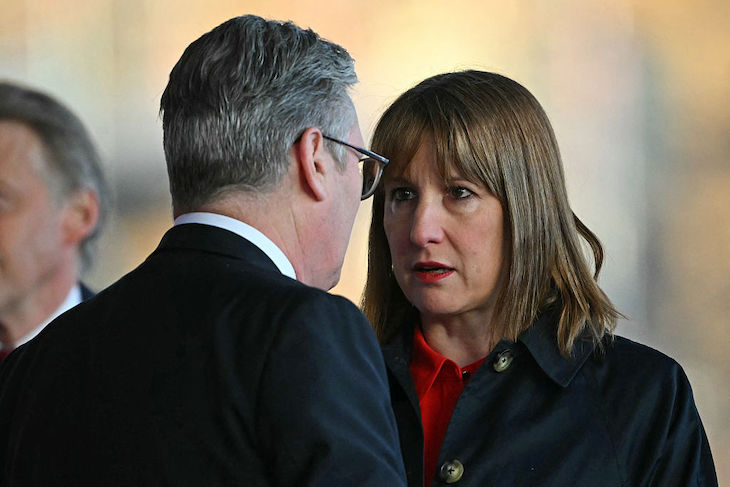When Volodymyr Zelensky speaks of the Ukrainian territories under Russian control, he always calls them ‘temporarily occupied’. The phrase, first used by Zelensky’s predecessor, has been engraved into Ukrainian politics since 2014, after Vladimir Putin seized Crimea. That terminology is more than symbolic – it’s a promise that Ukraine will one day, even if it takes decades, reclaim all of its land. Now, Donald Trump wants to take that chance away.
Trump is reportedly considering recognising Crimea as part of Russia in exchange for a ceasefire in Ukraine. And if the peace agreement isn’t reached soon, he threatens to walk away. ‘If for some reason, one of the two parties makes it very difficult, we’re just gonna say you’re foolish, you’re fools, you’re horrible people, and we’re going to just take a pass,’ he said yesterday.
But it’s not Russia Trump is pressuring – it’s Ukraine. The Kremlin has long asked Washington to step aside so Russian troops can ‘finish the job’ quicker. Trump, who couldn’t end the war either in 24 hours or 100 days and remains clearly reluctant to demand anything from Moscow, could once again be offering Ukraine an ultimatum: surrender more, or fight alone.
Crimea is where the war began – could it really be the key to ending it? I searched for the answer when I crossed the Chongar Strait into the occupied peninsula in September 2018. Posing as a backpacker en route to the Crimean mountains, my story seemed plausible enough to the Russian border guards who waved me through. Back then, the Kremlin was already preparing for the future war: as I travelled through the peninsula, bulldozers roared until dusk, flattening tarmac onto the new, smooth-as-glass roads from the Kerch bridge and up to Chongar. I didn’t grasp it then, but they were designed to supply the Russian army with weapons in a future war.
Ukraine gave up Crimea without a fight, naively hoping Putin would stop there. It also didn’t have the strength to resist: the country was practically beheaded after the Maidan Revolution, with the pro-Russian president and his cronies fleeing to Rostov-on-Don. While daily farewell ceremonies for dozens of killed pro-EU protesters were held on Independence Square in Kyiv, and while the parliament was busy appointing a temporary government unmarked Russian troops entered Crimea.
It took Putin less than a month to seize the peninsula. Pro-Russian sentiment was quite significant at the time, with surveys showing that between 35 per cent and 54 per cent of residents favoured joining Russia. But over 15,000 people still rallied under the Crimean parliament to protest the invasion, just before it was stormed by Russian special forces. The so-called referendum that followed claimed 97 per cent support for annexation. Numerous international reports proved that the results were rigged.
The West looked the other way, desperate not to provoke Russia or risk a bigger war. How did that turn out? Putin came for more, launching the invasion of the Donetsk and Luhansk regions. Appeased by Europe in the Minsk-1 and Minsk-2 ceasefire agreements, he then marched on Kyiv. Today, Trump’s administration is repeating the same mistake – thinking that Putin will stop the killing once his aggression is rewarded.
Ukrainians won’t accept it
Washington has grown too comfortable treating Crimea – and the other occupied territories in Ukraine – as lifeless patches of land Kyiv and Moscow can’t agree on. Steve Witkoff says it should be easy for Ukraine to give up the mostly Russian-speaking regions. It’s convenient for people to think of it this way, to close their eyes to how the Kremlin has been quietly cleansing seized territories – intimidating, persecuting, imprisoning, torturing and deporting the local population that opposes the regime.
Crimea’s indigenous Tatars have been hit the hardest. Those who survived deportations during Stalin’s rule returned home under Ukraine’s flag in the 1990s, only to watch Putin finish the job. I met a small group of Crimean Tatars at an underground cafe in Simferopol in October 2018. ‘People are frightened, hiding flags under their beds,’ one told me. ‘No one wants to stand up for us. It is scary to live here.’ Four years into the annexation, their homes were still being raided. Today, over a hundred Crimean Tatars (that we know of) are imprisoned in Crimea and Russia.
More than a million Russians have migrated to the peninsula since then, replacing the pro-Ukrainian population. Today, they constitute the majority in Crimea – some figures say over 60 per cent. Time is not on Kyiv’s side: with each passing year, the ties between the peninsula and Ukraine weaken, and the Russian grip on the territory tightens. A new generation that has never known Ukraine as its home is growing up, learning in schools about ‘Nazis bombing them from Kyiv’.
The population ebbs and flows depending on who holds power. When Ukraine struck the Russian military base in Crimea for the first time in August 2022, hundreds of Russians packed their belongings and headed towards the Kerch bridge. That day, I received a message from a Ukrainian woman living in Dzhankoy, north of Crimea: ‘The rats are running from the sinking ship,’ she wrote to me. Ukrainians who fled the occupation are waiting to return home.
Trump’s plan to hand over Crimea in exchange for a ceasefire is doomed to fail. Ukrainians won’t accept it as they believe it guarantees another war. Trump’s art of the deal is to give up Crimea and freeze the fighting along the rest of the frontline. Such a peace won’t hold. The American president must understand the core of this conflict: as long as Putin believes that Ukraine isn’t a real country, that Ukrainians and Russians are ‘one people’ and that international law can be bent to fit his appetite, he will keep carving pieces off Ukraine.









Comments